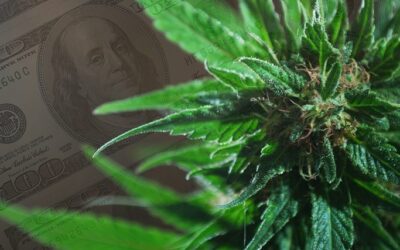The rate of marijuana use among teens in U.S. states with legalized medical marijuana has not increased since the laws were implemented, according to Columbia University investigators.
Once again, the common myth that marijuana legalization leads to an increase in use among adolescents has been debunked. Findings in a new study from researchers at Columbia University indicate that the legalization of medical marijuana does not encourage cannabis use by teens.
The study, funded by the National Institute on Drug Abuse and published in the journal Prevention Science, showed that teen cannabis use has remained steady after states passed and implemented their respective medical marijuana laws.
“We found no evidence of an effect of [medical marijuana law] enactment in any [marijuana use] outcome for both men and women aged 12–17,” the researchers wrote in the study. “Due to developmental concerns, [medical marijuana laws] are explicitly designed to restrict access to youth. As such, the lack of change in [marijuana use] outcomes among youth could reflect [medical marijuana laws] being implemented as intended.”
The findings are consistent with those of previous studies. Since 1996, 29 U.S. states have so far legalized medical marijuana, yet marijuana use by teens dropped by 17 percent between 2002 and 2014.
Earlier this year, an analysis by a group of Washington state experts revealed that marijuana use by adolescents has actually slightly decreased since marijuana was legalized there. A federal report from the National Survey on Drug Use and Health published in September found teen cannabis use to be at a 22-year low.
The new Prevention Science study did find that state laws permitting the use of cannabis for medical purposes were associated with a rise in marijuana consumption among adults over age 26. The daily use of cannabis among men over 26 years of age rose from 7.0 percent to 8.7 percent. Among women over 26 years of age, daily marijuana use increased from 3.1 percent to 4.3 percent.
“Regression modeling showed that there was not a statistically significant increase in past-month [marijuana use] after enactment of [medical marijuana laws] in men or women aged 12-17 or 18-25,” the study reads. “However, among people 26+, the increase in past month [marijuana use] was statistically significant for both men and women.”
The Ivy League investigators also found that daily marijuana use increased among males aged 18 to 25.
The study revealed, however, that “even in age/gender subgroups reporting increases in past-month and daily” use, there was “no corresponding increase” in the prevalence of marijuana use disorder.
You can access the entire study, “Impact of Medical Marijuana Laws on State-Level Marijuana Use by Age and Gender, 2004-2013,” through Prevention Science.
Learn More about Current Marijuana Laws in the U.S.
Despite marijuana’s federal prohibition, eight of the 29 U.S. states with medical marijuana laws in place have also legalized recreational marijuana. Analysts believe further expansion of legalization is inevitable in the coming years.
Cannabidiol (CBD) hemp oil products are federally legal without a prescription or medical marijuana card. Individual state laws, however, are dynamic and fluid and individual states may enact their own laws governing hemp-derived CBD.
You can learn more about the current marijuana laws in the U.S. by visiting our education page.






